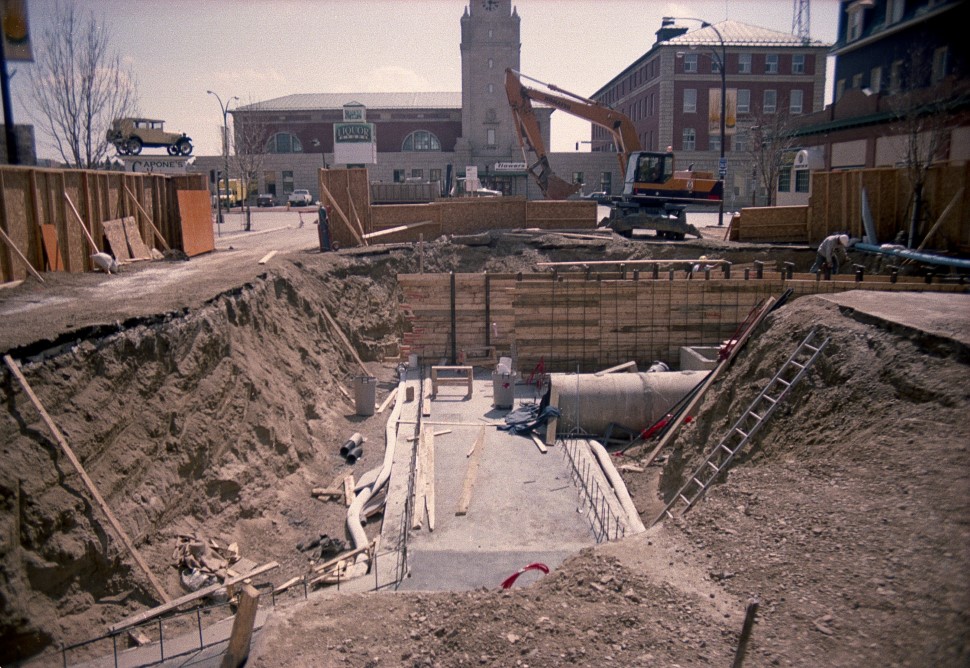This summer, the Tunnels of Moose Jaw celebrates 25 years at the heart of the city’s tourism and downtown revitalization efforts — a milestone that reflects Moose Jaw’s remarkable history and the ability of entrepreneurs to take advantage of that history to reinvent the city as a destination.
What began as an ambitious vision to preserve local stories and historic spaces has evolved into one of Saskatchewan’s top tourism draws. The Tunnels’ combination of immersive storytelling, interactive sets, and theatrical performances attracts visitors from across Canada and around the world.
Revitalizing the downtown
At the time of its founding in 2000, Moose Jaw’s downtown was struggling. The late 1990s saw more than 50 per cent of commercial spaces empty and numerous buildings marked for demolition.
However, Tunnels founder Danny Guillaume said he recognized that Moose Jaw’s rich and notorious past — stories of Prohibition bootleggers, Chinese immigrants who helped build the Prairies, and the city’s vital connection to the railways — could form the backbone of a tourism attraction with staying power. He believed plans to demolish many old buildings would effectively destroy that appeal.
“What you really need to bring people here is a reason — a tourism anchor that tells stories they can’t find anywhere else,” Guillaume said in an interview with Discover Moose Jaw.
With support from local business leaders and wealthy, influential private investors including Paul Hill and the presidents of Sun Life and Graham Construction, Guillaume and a team of researchers, tradespeople, designers, and actors transformed what was once a modest nonprofit exhibit into a nationally recognized attraction. The initial infrastructure work was completed in just six months, employing around 70 workers at a time when the city was facing high unemployment.
The payoff was immediate and significant. Guillaume said he heard from investors that within the first two years of the project starting, $65 million had been invested into the downtown core.
"To me, one of our greatest initial accomplishments was to kind of keep downtown," he explained, "and build it into something, you know, a pleasant, beautiful environment that was unique to Saskatchewan and the prairies, and kind of revitalize the history. And my job in all this was to build the tunnels. And so, we did lots of research on the tunnels and we went at it."
Civic pride in historicity
Moose Jaw’s downtown revival was about more than just bricks and mortar. The Tunnels of Moose Jaw helped foster a sense of civic pride and cultural awareness.
Historic sites like the CPR station, vaudeville-era buildings, and aging commercial blocks found new life as developers and entrepreneurs reinvested in the district. The Capitol Theatre’s restoration and the growth of events like Sidewalk Days and the Festival of Words added to a new narrative: downtown Moose Jaw as a vibrant place to visit.
Guillaume said that the tunnels’ success was also built on partnerships — with the City of Moose Jaw, provincial organizations, tourism agencies, and the local business community. Marketing efforts, including billboards along highways and a strong radio presence in Regina and beyond, ensured that the Tunnels became a key stop for travelers crossing the Prairies.
"We've been told, through the government economic studies, that we bring about $33 million a year to Moose Jaw in economic activity," Guillaume said. "And you know, over 25 years that's $750 million that this little business has created. I kind of get tingles in my spine thinking of that, because well if there's something we should be proud of it's that we've made a difference for other people.
"It sounds idealistic to talk about, but I honestly think that's where we get inspired, is if we can make a difference long-term to the city and contribute something that is unique and good."
A worldwide reputation
Today, the Tunnels of Moose Jaw offers three signature tours:
- The Chicago Connection, focusing on the lore of Al Capone’s rumored visits to Moose Jaw during Prohibition;
- Passage to Fortune, telling the story of Chinese immigrants who labored in western Canada and faced discrimination while contributing to the province’s growth, and;
- The newest addition, Bunker 24, exploring Cold War history and Moose Jaw’s connections to Canadian military preparedness.
Guillaume noted that last year alone, visitors from more than 100 countries signed the Tunnels guestbook. He credits this success not only to the quality of the tours but to Moose Jaw’s character as a place where history feels close and personal.
“The history is colourful, you know?” Guillaume said. “It's wild, there's great stories here."
Throughout the past quarter-century, the Tunnels has adapted to new challenges while preserving that sense of place. The COVID-19 pandemic forced an unprecedented 18-month closure, but Guillaume and his team used the downtime to reinvest in infrastructure, refresh tour scripts, and develop the new Cold War tour in consultation with military historians.
“Rather than sit idle, we thought, let’s rebuild and improve,” he said.
Looking ahead, Guillaume says he’s committed to ensuring that the Tunnels of Moose Jaw continues to evolve as an institution, one that both honours and innovates in how it shares the city’s past.
“My goal would be, this is around for the next 100 years and becomes an institution for the city and way beyond me,” he said.
He’s exploring new programming ideas such as behind-the-scenes tours for history enthusiasts, premium VIP experiences, and greater integration with downtown events and the hospitality sector.
The tunnels’ longevity and success serve as a reminder of Moose Jaw’s potential as a hub for heritage tourism, offering an authentic experience grounded in local stories and architecture. The legacy of the tunnels’ first 25 years demonstrates that even a small prairie city can become a world-class destination when it invests in its history and shares it with care.
[with contributions from Gordon Edgar]
